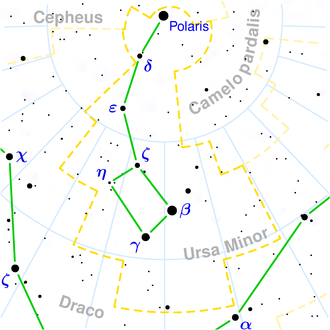NGC 5262
| Galaxy NGC 5262 |
|
|---|---|
|
|
|
| AladinLite | |
| Constellation | Little Bear |
|
Position equinox : J2000.0 , epoch : J2000.0 |
|
| Right ascension | 13 h 35 m 38.6 s |
| declination | + 75 ° 02 ′ 22 ″ |
| Appearance | |
| Morphological type | S0- |
| Brightness (visual) | 14.2 mag |
| Brightness (B-band) | 15.2 mag |
| Angular expansion | 1.2 ′ × 0.7 ′ |
| Position angle | 14 ° |
| Surface brightness | 14.1 mag / arcmin² |
| Physical data | |
| Redshift | 0.030625 +/- 0.000070 |
| Radial velocity | 9181 +/- 21 km / s |
|
Stroke distance v rad / H 0 |
(417 ± 29) · 10 6 Lj (127.9 ± 9.0) Mpc |
| history | |
| discovery | John Herschel |
| Discovery date | May 5, 1831 |
| Catalog names | |
| NGC 5262 • UGC 8606 • PGC 47923 • CGCG 353-022 • GC 3627 • h 1660 • | |
NGC 5262 is a 14.2 likes bright lenticular radio galaxy from the Hubble type e-S0 in the constellation Ursa Minor . Together with the non-NGC object UGC 8595, it forms a gravitationally bound double galaxy. It is about 417 million light years from the Milky Way .
The object was discovered by John Herschel on May 5, 1831 .
Web links
- NGC 5262. SIMBAD, accessed February 8, 2016 .
- NGC 5262. DSO Browser, accessed February 8, 2016 .
- Auke Slotegraaf: NGC 5262. Deep Sky Observer's Companion, accessed February 8, 2016 .
